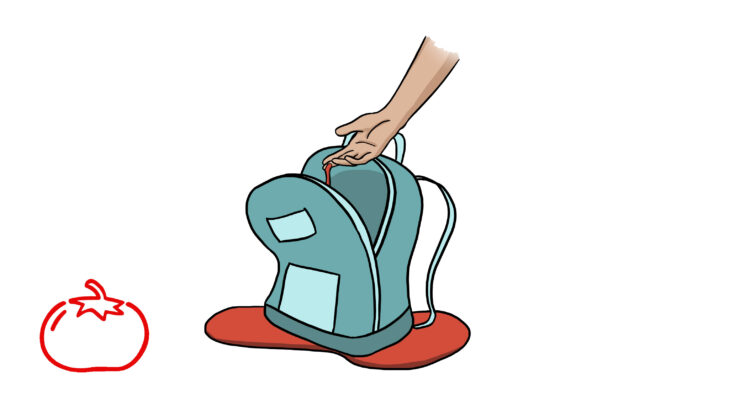A growing trend in sensational sounds
Calming or creepy?
Autonomous sensory meridian response (ASMR), a tingling sensation of euphoria commonly triggered by listening to and watching videos of ‘ASMRists’ making daily sounds or completing repetitive tasks, is a growing trend in the online world. Whether it be for the purpose of therapy or just pure entertainment, ASMR is also an emerging field of research that has much to offer.
According to the little scientific research completed thus far, ASMR cannot be experienced by all and its causes are still a bit of mystery.
The most promising current theories on the causes of ASMR come from Craig Richard, a professor at Shenandoah University in Virginia, and Stephen Smith, a professor at the University of Winnipeg, two of the world’s leading researchers into the phenomenon.
“(ASMR) could be due to the expression of specific genes,” Richard explained in an email to the Fulcrum.
“The neural networks of people (able to experience) ASMR are less distinct (or more blended together) than people who can’t experience ASMR,” Smith added in an email exchange.
The sensations some experience through ASMR can be difficult to explain to others who can’t, researchers say. The lucky people who can experience ASMR tend to describe the sensation as both “wave-like” and “dynamic” because they can feel the tingling sensation slowly move around different sections of their body near their periphery. The feeling often comes with a deep sense of calm and peacefulness, according to an article published in PeerJ in 2015.
One of the first major studies into ASMR was published last year in the journal Frontiers in Psychology. The study suggested “there may be multiple ASMR subtypes, each involving a greater sensitivity to one or more types of triggering stimuli.”
ASMR-triggering sounds come in many different shapes and sizes, from whispering, scratching and tapping, blowing, brushing a mic, painting, page turning, role playing, and much, much more.
This supports the theory that not all triggers seem to work on everyone, but Richard noted that “several studies have reported that the most (common) ASMR triggers are whispering, soft speaking, personal attention, and crisp sounds like tapping and crinkling.”
“ASMR seems to involve an atypical link between different sensory systems,” Smith said.
A community on the rise
Most online video platforms now feature such content, and the ASMR community has expanded exponentially since it originated in 2010. Some popular ASMR YouTube channels, such as GentleWhispering and Heather Feather, have racked up as much as 1.4 million and 500,000 subscribers respectively.
Well-known ASMR YouTuber British Primrose told HuffPost in 2016 that “the community has tripled since (she) first discovered it (in 2012).”
One of the first recorded experiences of ASMR in literature can be traced back to Virginia Woolf’s 1925 classic, Mrs. Dalloway. Some have suggested the vivid audio-visual imagery shrouding Woolf’s writing style hinted at the idea of ASMR being experienced by some characters in the book.
When ASMR broke into the mainstream in 2010, it was known by a variety of other names: head tingle, brain tingle, spine tingle. Some suggested ‘tingle’ was really just a code word for an orgasm.
While ASMR itself doesn’t necessarily have to carry any sexual connotations, new subtypes such as ‘ASMR-otica’ are emerging. In fact, when the term ASMR was coined by a woman named Jennifer Allen in 2010, it was originally coined to mean something along the lines of spontaneous orgasmic feelings.
For ASMRists on YouTube, the largest view counts often come from videos where they engage in role play, generally as a medical professional. The most popular ASMRists are also often females. Some suggest this may be because males are more prone to feeling ashamed of engaging in this type of content, rooted in gender norms.
Popular ASMR YouTuber TheOdd1sOut pointed out in a video that an ASMRist’s primary task is to calm their viewers, whether this be through ‘curse-removal rituals’ or ‘alien roleplay,’ some which last for over an hour.
“You can type ASMR (on YouTube) and then type anything after that and you’ll get something,” emphasizing how broad the field of ASMR video making has become.
More than a feeling
The applications of ASMR expand into several fields, from neurology to imaging technology, medicine and mental health issues.
“ASMR has the greatest potential to be beneficial for patients diagnosed with anxiety and insomnia,” Richard said. “ Our preliminary data shows that about half of those individuals diagnosed with these conditions report ASMR is helpful to their condition.”
“It is possible that ASMR might have positive effects on (mental) health similar to those associated with meditation, but there’s no evidence that it should be used as a replacement for established therapies,” Smith cautioned.
Despite ambiguities in exactly what ASMR is, Richard pointed out that “ASMR videos are helping people around the world to de-stress and fall asleep more easily. ASMR services like ‘Whisperlodge’ are providing professional person-to-person ASMR sessions like visiting a masseuse, and ASMR has even influenced some commercials to be more quiet and relaxing.”
A study published in PeerJ: Brain and Cognition in 2015 suggested that ASMR could be used as “a therapy tool for those suffering from depression, stress and chronic pain.” The researchers also found that most ASMR consumers engaged in the videos before bed, as it helped them calm their senses, allowing for better sleep.
“Interestingly, one of the biggest complaints (from people who experience ASMR) is that it may go away temporarily,” Richard said. “I refer to this as ‘ASMRtolerance.’ ASMR will usually return if the person avoids ASMR stimulation and ASMR videos for about one week, so you could say that ASMR has a natural ‘anti-addiction’ mechanism built into it.”
This counters Smith’s perspective of the potential problem of ASMR addiction.
“People could (potentially) hide from reality by watching ASMR videos in the same way that they hide from reality by playing video games or wasting time on their favourite websites,” he said. “Some people who use ASMR videos to help them sleep might feel dependent upon them.”
Despite the potential for addictive and compulsive indulgence in the phenomena, Smith said he has not come across any evidence suggesting that dependence is a long-term problem.
“People who need ASMR videos to go to sleep should consult their doctor and get a referral to a sleep clinic—the problem is likely larger than ASMR videos,” he added.
A topic for further study
Smith also brought up a valid and current problem in ASMR research: “The videos are quite strange, so many academics shy away from the phenomenon,” he said. “This makes it difficult to publish, which is problematic if you are a graduate student or are trying to establish yourself as a young academic (in the field).”
Richard encouraged pursuing study in the field for its bare potential.
“I highly encourage students to get involved in ASMR research,” he said. “It is such a new area of study that anyone who does ASMR research today, will be considered a ‘pioneer’ of ASMR research within five years.”
As for the average person, the community encourages others to avoid knocking ASMR until they try it. You too may be hooked into the world of euphoric sounds before you know it.







